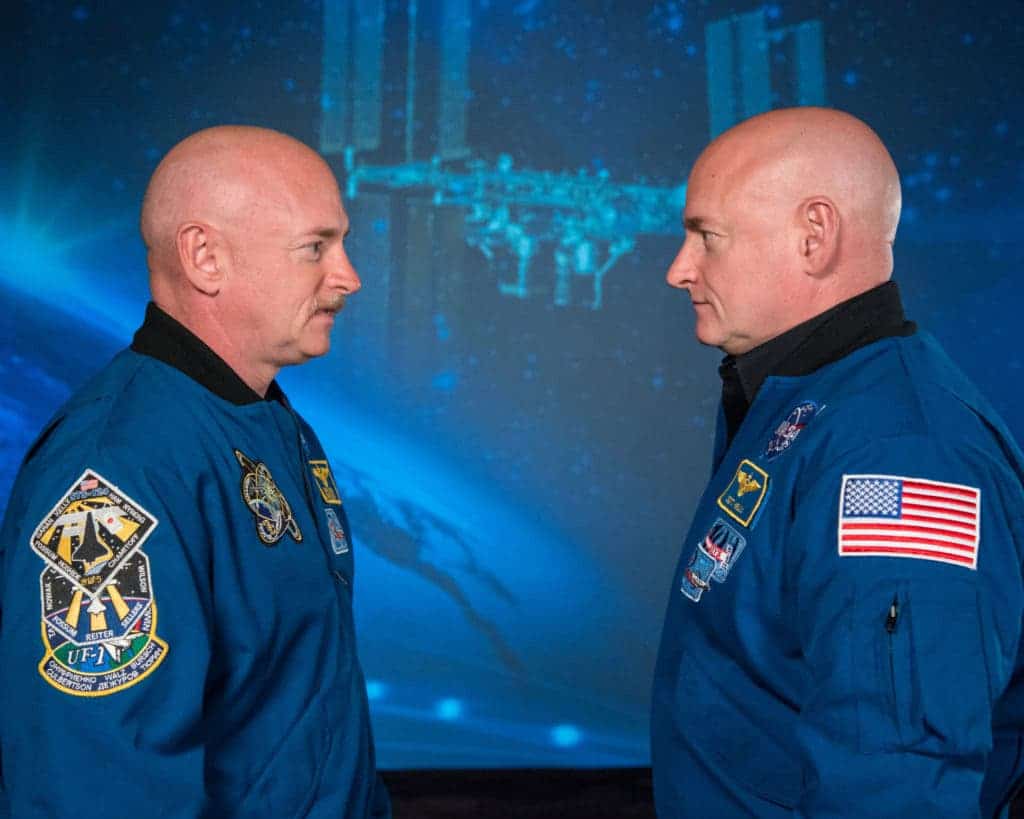Astronaut Mark Kelly spent just shy of a year on the International Space Station. He also has a twin brother. NASA used this opportunity to study how life in space changes the human body.
Three years after his return, the test results of his extended stay are in. Dubbed the NASA Twin Study, it is the most comprehensive integrated molecular, physiological and behavioral analysis of how the human body responds to space flight .

The study included the work of 84 scientists, part of 10 teams from 12 universities across the United States. Each report studied different aspects of the human body in space. The data included cognitive measurements, physiological data and 27 months of samples from both Scott and his twin Earth-bound brother Mark, including blood, plasma, urine, and stool.
“The Twins Study has been an important step toward understanding epigenetics and gene expression in human spaceflight,” said J.D. Polk, chief Health and Medical Officer at NASA Headquarters. “Thanks to the twin brothers and a cadre of investigators who worked tirelessly together, the valuable data gathered from the Twins Study has helped inform the need for personalized medicine and its role in keeping astronauts healthy during deep space exploration, as NASA goes forward to the Moon and journeys onward to Mars.”
During his 342 days in orbit, Scott also became the first American to spend almost a whole consecutive year in space. While he was found to be in good health after the testing concluded, not everything was alright.
According to the study, which was reported in the journal Science, Scott underwent several changes. Among them were carotid artery thickening, DNA damage, gene expression changes, retinal nerve thickening, shifts in gut microbes, reduced cognitive abilities as well as a structural change at the ends of chromosomes called telomeres. In contrast to some stories reported last year though, there were no DNA mutations.
Researchers also found that his immune system acted basically the same way it would for you and me; a flu vaccine administered worked exactly as it would have on Earth. Researchers also found that changes in Scott’s diversity of gut flora in space were no greater than stress-related changes scientists observe here.
The telomere elongation was one of the most striking finds though. Telomeres are the protective “caps” on the ends of chromosomes. And while 91.3 percent of his gene expression levels returned to normal or baseline levels within six months of landing back on Earth, he now has more short telomeres than he did prior to the 340-day mission. This could pose a problem as having shorter telomeres could put a person at higher risk for accelerated aging. It also increases the risk for diseases that come along getting older such as cardiovascular disease and some cancers. That’s a problem for those want to spend extended time in space (Mars, anyone?).
“For us Earthlings, it’s pretty similar,” said Colorado State University Professor Susan Bailey, who studies telomeres. “We all worry about getting older, and everyone wants to avoid cardiovascular disease and cancer. If we can figure out what’s going on, what’s causing these changes in telomere length, perhaps we could slow it down.”
But for the time being, NASA says that there were no long-lasting detriments to Scott’s health. However, the same might not be true for those who spend time outside of Earth’s gravitational field. Besides the time spent in space, astronauts going to Mars will also incur continuous radiation exposure.
“To our knowledge, this team of teams has conducted a study unprecedented in its scope across levels of human biology: from molecular analyses of human cells and the microbiome to human physiology to cognition,” said Craig Kundrot, director, Space Life and Physical Sciences Research and Application Division at NASA Headquarters. “This paper is the first report of this highly integrated study that began five years ago when the investigators first gathered. We look forward to the publication of additional analyses and follow-up studies with future crew members as we continue to improve our ability to live and work in space and venture forward to the Moon and on to Mars.”


